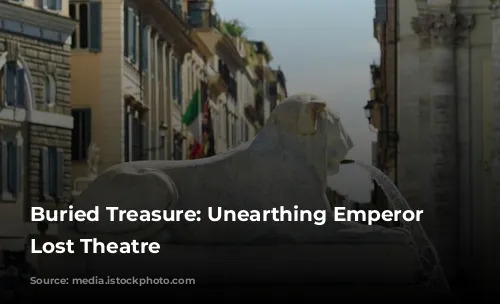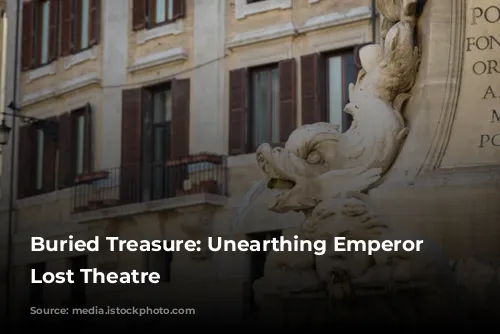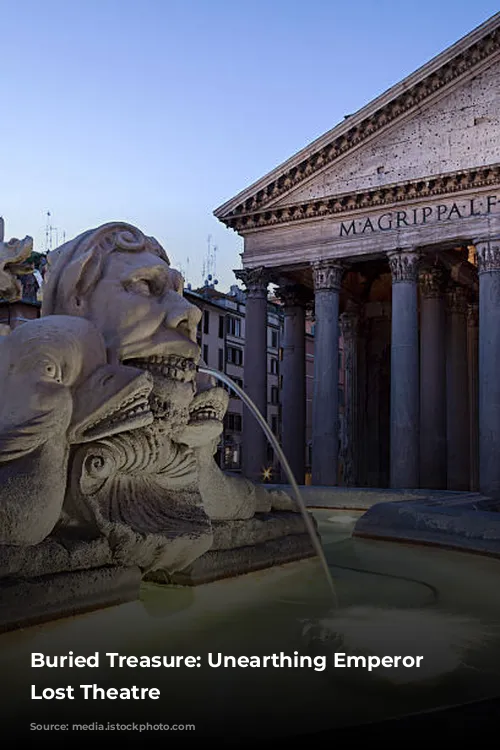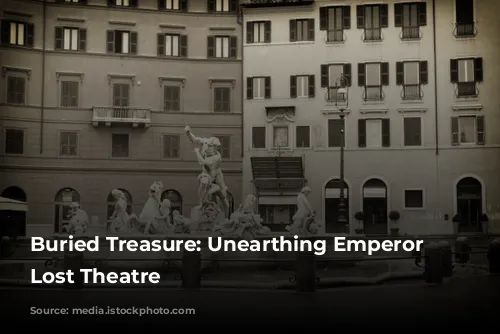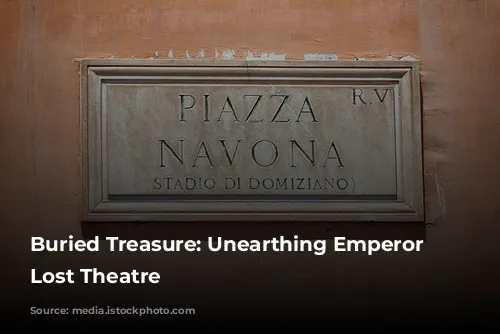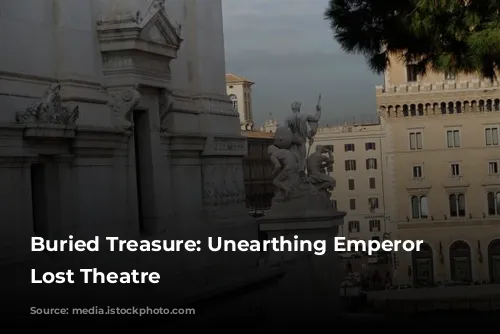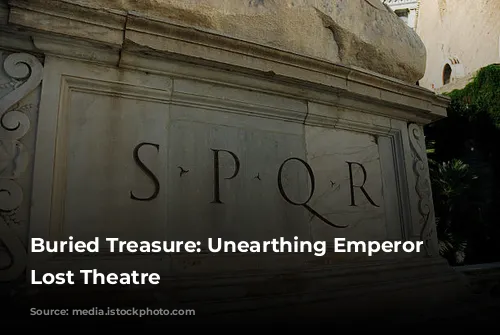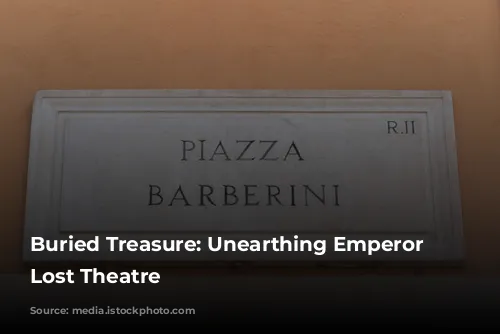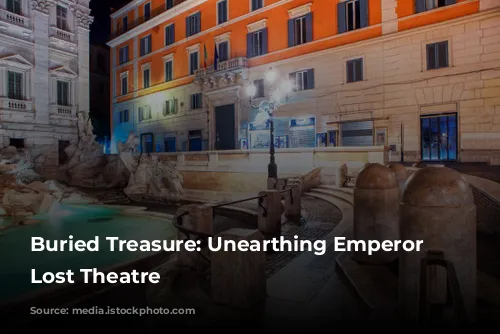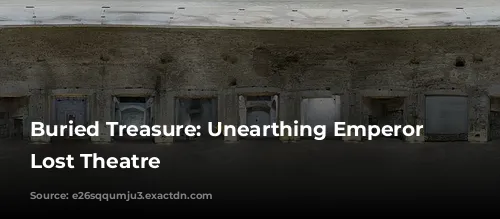Imagine: Stepping into a bustling Roman street, unaware of the secrets hidden beneath your feet. Now, picture a spectacular theatre, lost for centuries, emerging from the depths of history. This is the thrilling reality of a recent discovery in the heart of Rome.
The Eternal City, a living museum of ancient wonders, continues to surprise us. Emperor Nero, a name often whispered with a mix of fascination and fear, has once again become a focal point of archaeological intrigue. His reign, infamous for its excesses and architectural ambitions, has been the subject of countless studies, but the recently unearthed theatre offers a fresh perspective on his legacy.
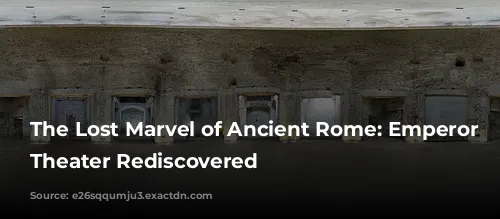
A Glimpse into Nero’s World
A Theatre Fit for a Roman Emperor
Nero, a ruler known for both brilliance and brutality, left a lasting mark on Rome’s cityscape. His ambitious building projects, extravagant festivals, and controversial reign have captivated historians for centuries. His grand theatre, known as the Domus Aurea, or Golden House, was a monument to his power and extravagance. Constructed in the heart of ancient Rome, it was a symbol of his patronage of the arts and his desire to leave a lasting legacy.
Beyond Entertainment: A Symbol of Authority
This wasn’t just a venue for entertainment, but a testament to his authority and magnificence. Built on the grounds of the Domus Aurea, the theatre was designed to impress and awe. It boasted a massive seating area, accommodating thousands of spectators who gathered to witness elaborate performances, including plays, musical concerts, and even gladiatorial contests.
A Symphony of Design and Engineering
The design of Nero’s theatre was a masterpiece of Roman engineering. Constructed on a monumental scale, it featured tiered seating arranged in a semi-circular fashion around a central stage. Marble columns adorned the facade, while intricate statues and reliefs decorated the interior, depicting scenes from mythology and Roman history. The stage itself was a marvel of craftsmanship, with elaborate sets and machinery that could create stunning visual effects, such as simulated storms and battles.

From Glory to Oblivion
A Rise and Fall: The Theatre’s Dramatic Fate
During Nero’s reign, his theatre was the epitome of luxury and sophistication, attracting the elite of Roman society to its lavish performances. However, with Nero’s death and the subsequent turmoil that engulfed the Roman Empire, the theatre’s fate took a dramatic turn. His successors sought to distance themselves from his legacy, and the Domus Aurea fell into disrepair and neglect.
Lost to Time: A Mystery Unveiled
Over time, Nero’s theatre vanished from sight, buried beneath layers of earth and debris. The city of Rome evolved and expanded, with new buildings and roads obscuring the remnants of its imperial past. The theatre’s location became a mystery, shrouded in myth and legend. But fate had a twist in store. Archaeologists, excavating the site for a new hotel in central Rome, stumbled upon the remains of the theatre. This discovery sparked excitement and speculation, reigniting interest in Nero’s reign and his architectural achievements.
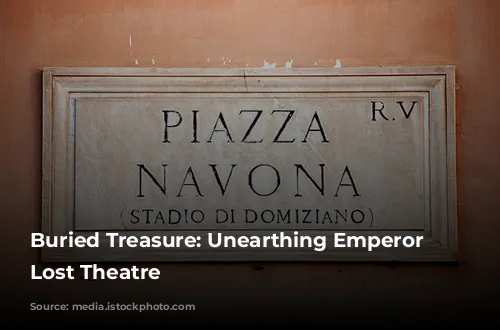
A Rediscovered Gem: Uncovering Ancient Secrets
A Modern Discovery: Unearthing a Lost Wonder
In the modern era, the search for Nero’s theatre intensified as archaeologists and historians sought to unravel the secrets of ancient Rome. The remains of the theatre were rediscovered during excavation work for a new hotel in central Rome. This discovery sent shockwaves through the archaeological community.
A Tapestry of History: Excavations Reveal the Past
Excavations at the site revealed the extent of the theatre, with sections of the seating area, stage structures, and decorative elements still intact. Fragments of marble statues, ornate decorations, and elaborate frescoes adorned the walls, offering a glimpse into the extravagance of ancient Roman entertainment. The discovery provided invaluable insights into the design and construction of Nero’s theatre, shedding new light on the cultural and artistic achievements of the Roman Empire.
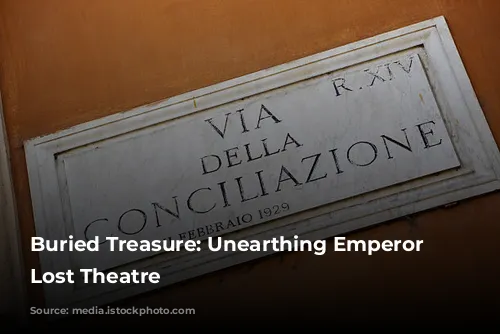
A Legacy Preserved: Ensuring Future Generations Can Experience Nero’s Vision
Protecting the Past: Preserving the Theatre for Tomorrow
With the excavation of Nero’s theatre comes the responsibility to preserve and protect this priceless archaeological treasure. The rediscovery of Nero’s theatre has sparked a renewed appreciation for the emperor’s architectural legacy and his contributions to Roman culture.
Sharing the Past: Opening the Doors to Nero’s World
Efforts are underway to ensure that the remains are protected for future generations, allowing scholars and visitors alike to continue exploring and learning from Rome’s rich history. Conservationists are working to stabilize the structures and prevent further deterioration, while plans are being made to open the site to the public, allowing visitors to experience the grandeur of Nero’s theatre firsthand. By preserving Nero’s theatre, we honor the legacy of the past and ensure that its story endures for generations to come.

The Enduring Legacy of Emperor Nero: A Glimpse into a Lost World
The discovery of Emperor Nero’s lost theatre offers a captivating glimpse into the glory and spectacle of ancient Rome. This rediscovery provides a window into the past, allowing us to explore the rich history and legacy of one of history’s most enigmatic rulers. As efforts continue to preserve and protect this priceless archaeological treasure, we are reminded of the enduring significance of Rome’s imperial past and the importance of preserving its cultural heritage for future generations.
